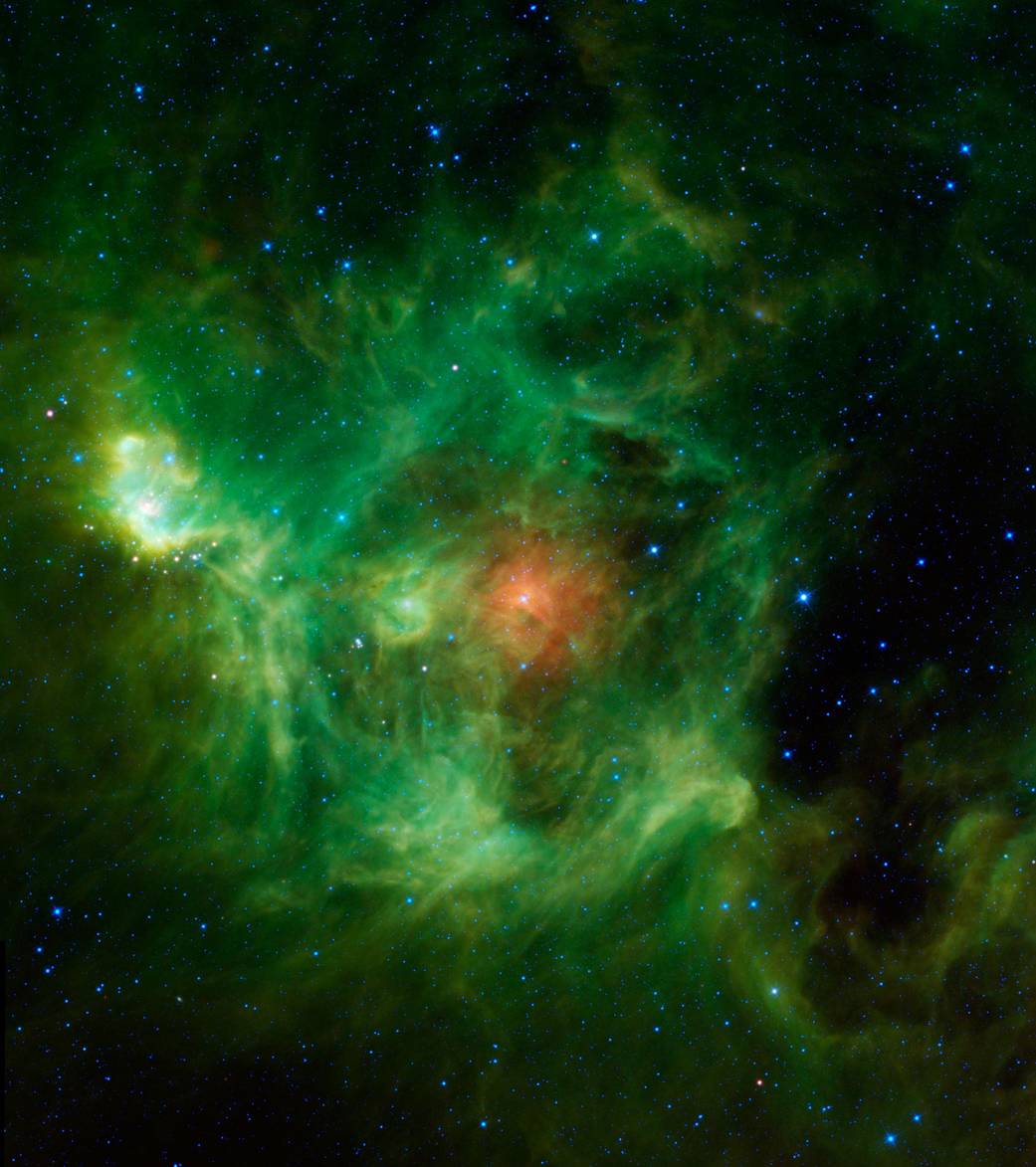
WISE, NASA’s Wide-field Infrared Survey Explorer, has a new view of Barnard 3, or IRAS Ring G159.6-18.5, that is awash in bright green and red dust clouds. Interstellar clouds like these are stellar nurseries, where baby stars are being born.
The green ring is made of tiny particles of warm dust whose composition is very similar to smog found here on Earth. The red cloud in the center is most likely made of dust that is more metallic and cooler than the surrounding regions. HD 278942, the bright star in the middle of the red cloud, is so luminous that it is the likely cause of the surrounding ring’s glow. The bright greenish-yellow region left of center is similar to the ring, though more dense. The bluish-white stars scattered throughout are stars located both in front of, and behind, the nebula.
Regions similar to this nebula are found near the band of the Milky Way galaxy in the night sky. This nebulas is slightly off this band, near the boundary between the constellations of Perseus and Taurus, but at a relatively close distance of only about 1,000 light-years, the cloud is a still part of our Milky Way.
The colors used in this image represent specific wavelengths of infrared light. Blue and cyan (blue-green) represent light emitted at wavelengths of 3.4 and 4.6 microns, which is predominantly from stars. Green and red represent light from 12 and 22 microns, respectively, which is mostly emitted by dust.Image Credit: NASA/JPL-Caltech/UCLA


























